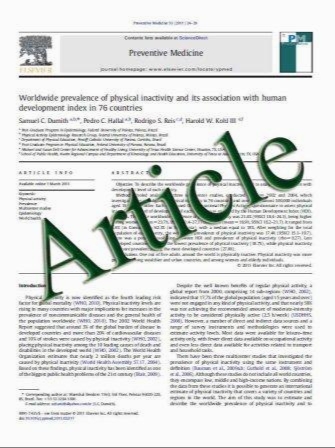Correlation Analysis Between Gene Expression Profile of Rat Liver Tissues and High-Fat Emulsion-Induced Nonalcoholic Fatty Liver
- نوع فایل : کتاب
- زبان : انگلیسی
- مؤلف : Cunshuan Xu Gaiping Wang Yunpeng Hao Jia Zhi Lianxing Zhang Cuifang Chang
- چاپ و سال / کشور: 2011
Description
Background Nonalcoholic fatty liver disease (NAFLD) is caused by fat metabolism disorders and thereby abnormal or excessive accumulation of fat in hepatocytes, and characterized by steatosis, inflammation, fibrosis, apoptosis or necrosis. Aim This study was carried out to explore the correlation between gene expression profiles of rat livers and the occurrence and progression of NAFLD at the transcriptional level. Methods A rat model of nonalcoholic steatohepatitis (NASH) was established by feeding male rats with high-fat emulsion via gavage, and Rat Genome 230 2.0 Array was used to detect gene expression profiles of liver tissues obtained from male rats following 0, 2, 4, and 6 weeks of high-fat emulsion feeding. Methods of bioinformatics and systems biology were applied to analyze the correlation between gene expression changes and physiological activities involved in NAFLD. Results In total, 93 function-known genes, including 36 up-regulated and 57 down-regulated, differed significantly in expression compared to those of control rats, and 18 physiological activities were closely related to NAFLD. Especially, the activity of cell differentiation was decreased during the whole process of NAFLD, and the activities of inflammation response, stimulus response, cell migration and adhesion were attenuated in the second, fourth and sixth week, respectively. In the fourth and sixth weeks, lipid metabolism and cell apoptosis were augmented, and the former might be associated with the enhanced expression of plin, acsl6, scd2, elovl3, etc. Conclusion These data provide useful information on the global gene expression changes due to high-fat emulsion feeding and bring important insights into the mechanisms of NAFLD.
Dig Dis Sci (2011) 56:2299–2308 DOI 10.1007/s10620-011-1599-9 Received: 11 October 2010 / Accepted: 27 January 2011 / Published online: 17 February 2011


